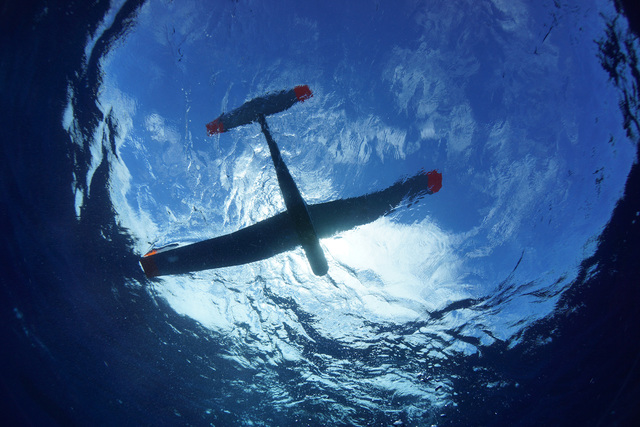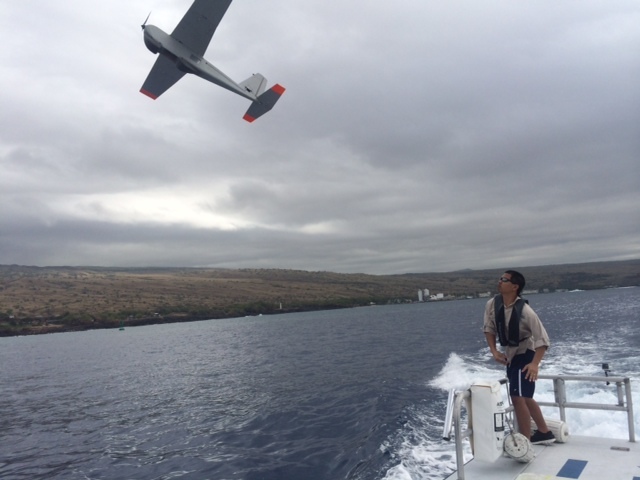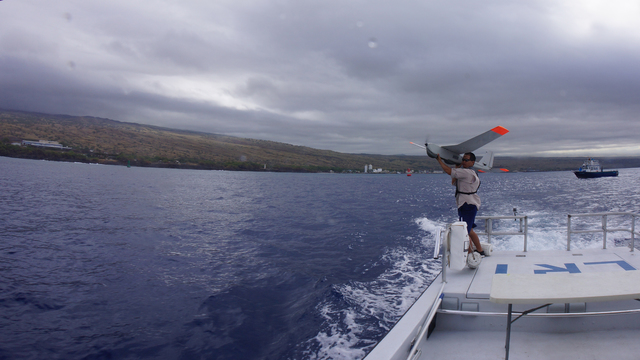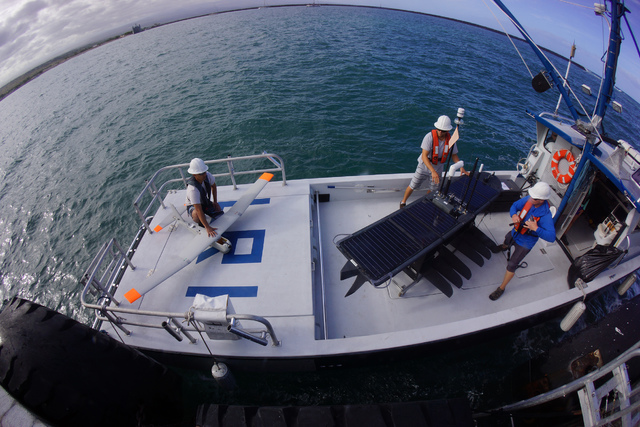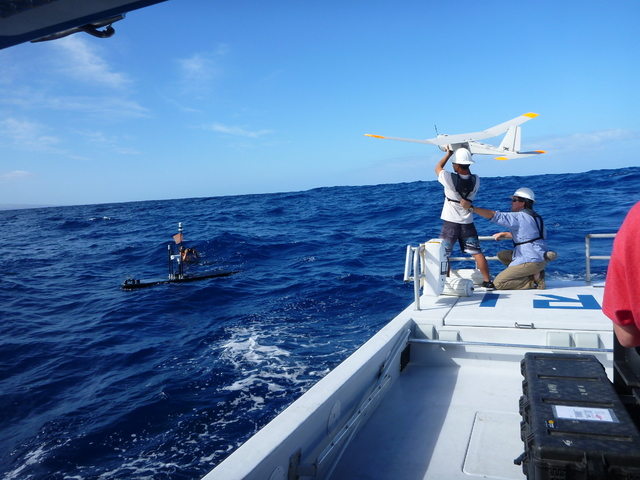NOAA tests research drones off Big Isle
National Oceanic and Atmospheric Administration researchers recently tested two different drones in the waters off the Kohala Coast with the hopes of someday being able to use the combined technologies to locate vessels and marine life in distress, conduct wildlife surveys and access hard-to-reach areas.
ADVERTISING
“Unmanned aircraft systems represent the next development in marine resources monitoring and are potentially cheaper, greener and safer than manned flights,” said Matt Pickett, aviation operations director for NOAA’s Office of National Marine Sanctuaries. “This successful test and collaboration with Liquid Robotics demonstrates the potential for these two technologies to work together for management and research operations.”
The Hawaiian Islands Humpback Whale National Marine Sanctuary served as the laboratory for the tests, which occurred roughly two weeks ago off Kawaihae. Researchers used NOAA’s Puma Unmanned Aircraft System and two surfboard-like robots propelled by the power of waves and the sun called Wave Gliders, developed by Liquid Robotics Inc.
The Puma UAS is equipped with real-time video and photo capability. This small, lightweight aircraft can be hand-launched and recovered from any location on land or at sea. The aircraft can fly for up to two hours and cover a range of about 50 square miles, according to NOAA.
Liquid Robotics, which has an engineering and testing facility at Kawaihae Harbor, was the first to develop the hybrid wave- and solar-powered ocean robots that’s making ocean observation, data collection and monitoring easier, safer and cost-effective for businesses, governments and scientists. The system is designed to collect and transmit data gathered during missions lasting up to a year, over thousands of miles or while remaining in place. Individual or small group glider deployments carry suites of sensors and operate individually or in fleets.
During the tests, two Wave Gliders equipped with acoustic sensors and positioned a few miles apart were able to identify and relay the location of a target vessel that entered their vicinity to the operations center. This information was programmed into the Puma UAS, which then was able to locate and photograph the target.
For Pickett, the best part of the tests was “seeing the two different unmanned technologies working together and being able to envision the way these types of technologies can better manage and monitor our National Marine Sanctuaries.”
Pickett said tests such as the one with Liquid Robotics are among several collaborations happening across the National Marine Sanctuary System. The Office of National Marines Sanctuaries currently is developing a Center of Excellence for Unmanned Technologies at the Channel Islands National Marine Sanctuary, which is partnering with universities, research agencies and manufacturers to develop, demonstrate, test and evaluate various drones. The office hopes to learn and show how drones can be used as potential tools for environmental research and management within the sanctuary system. Among the technologies being tested are unmanned aircraft systems, autonomous underwater vehicles and unmanned surface vehicles.
Liquid Robotics President and CEO Gary Gysin said his company has a long-standing relationship with NOAA. Its robots have been used in various research projects, including helping NOAA improve its approach to hurricane forecasting and collecting surface temperature measurements during the ice-free summer in the Beaufort Sea.
Gysin said the recent demonstration helps bring to light a revolution in robotics that is advancing exploration and understanding. Such unnamed robots can aid in monitoring, conservation and protection in a more effective way. For example, Wave Gliders and Puma UAS could be used to patrol Papahanaumokuakea Marine National Monument, one of the largest marine conservation areas in the world, year round. Or, Wave Gliders could be tasked to be the ears of the ocean and record whale songs during the entire season while the Puma UAS is used to detect and photograph them.
The Office of National Marine Sanctuaries has so far found unmanned technologies very beneficial. Last year, the Puma UAS was used to video and photograph green sea turtles, Hawaiian monk seals, seabirds and marine debris at sea in the Northwestern Hawaiian Islands. It also was used to survey coast shoreline and bird nesting habitat.
When it comes to monitoring seabirds and other species of concern, Pickett said this unmanned aircraft, which is much quieter, has proven to be less intrusive, with most of the animals not even realizing its presence. In addition to reducing the impact on wildlife, it’s also safer and less expensive than say putting people in helicopters and flying offshore, he added.
But before NOAA’s application of unmanned technologies can occur, more evaluation is needed.
“We’re seeking a variety of funding opportunities and grants to further refine the procedures and protocols for utilizing unmanned systems to support sanctuary resource protection requirements,” Pickett said.
Gysin explained drones have gotten a bad reputation and the word often conjures up images of war or surveillance. He said one of the biggest obstacles to wider use of robotics is the lack of public understanding and awareness about the technology, which is why Liquid Robotics continues to do community outreach and education about its robots and the helpful roles they can play in society.
Email Carolyn Lucas-Zenk at clucas-zenk@westhawaiitoday.com.


